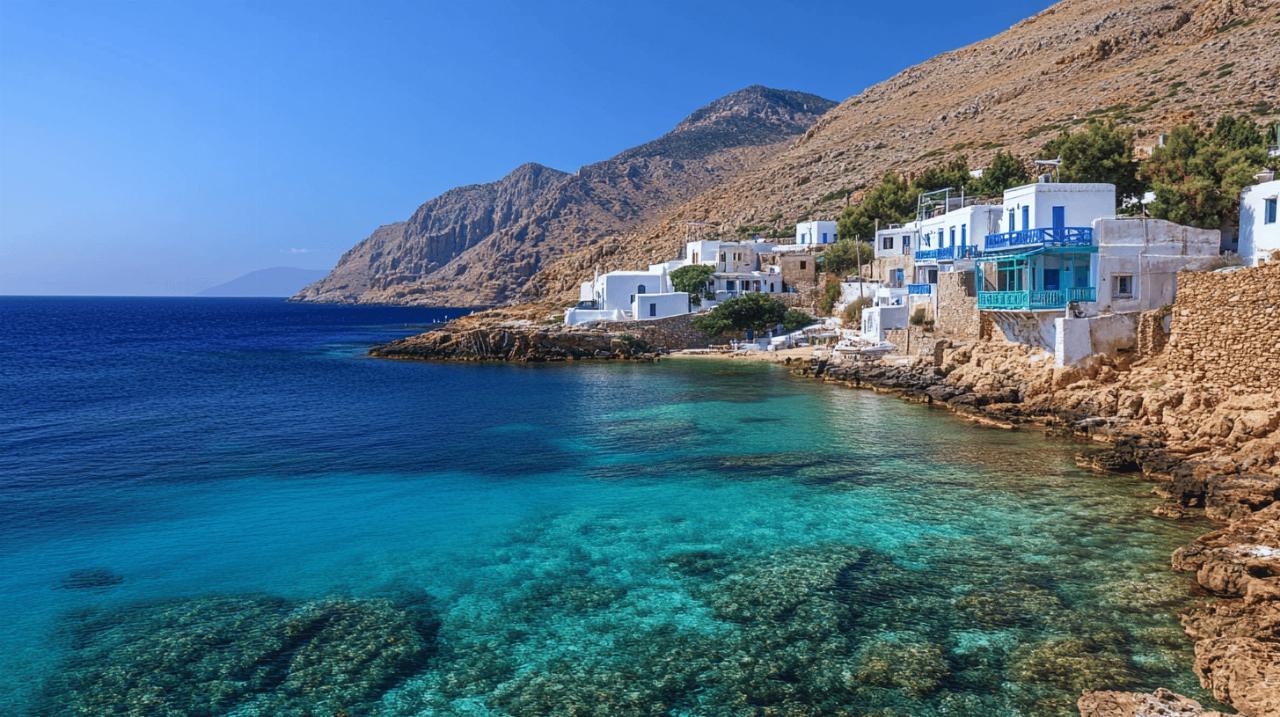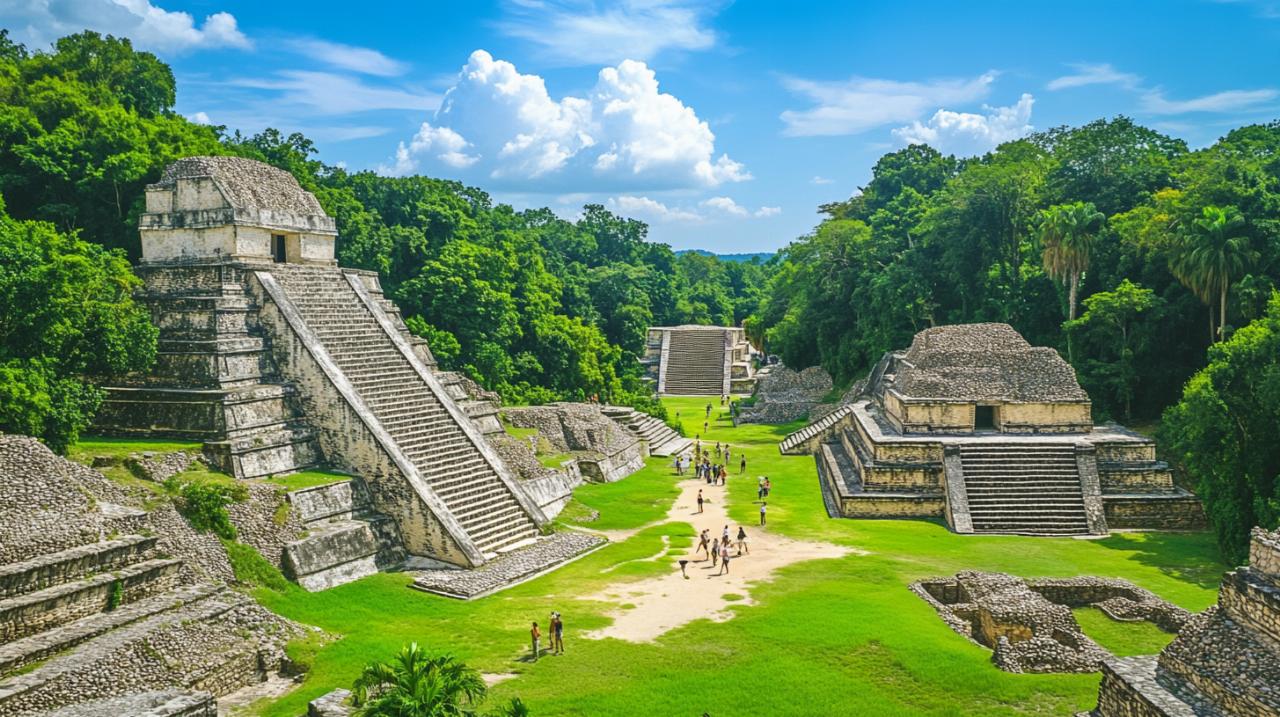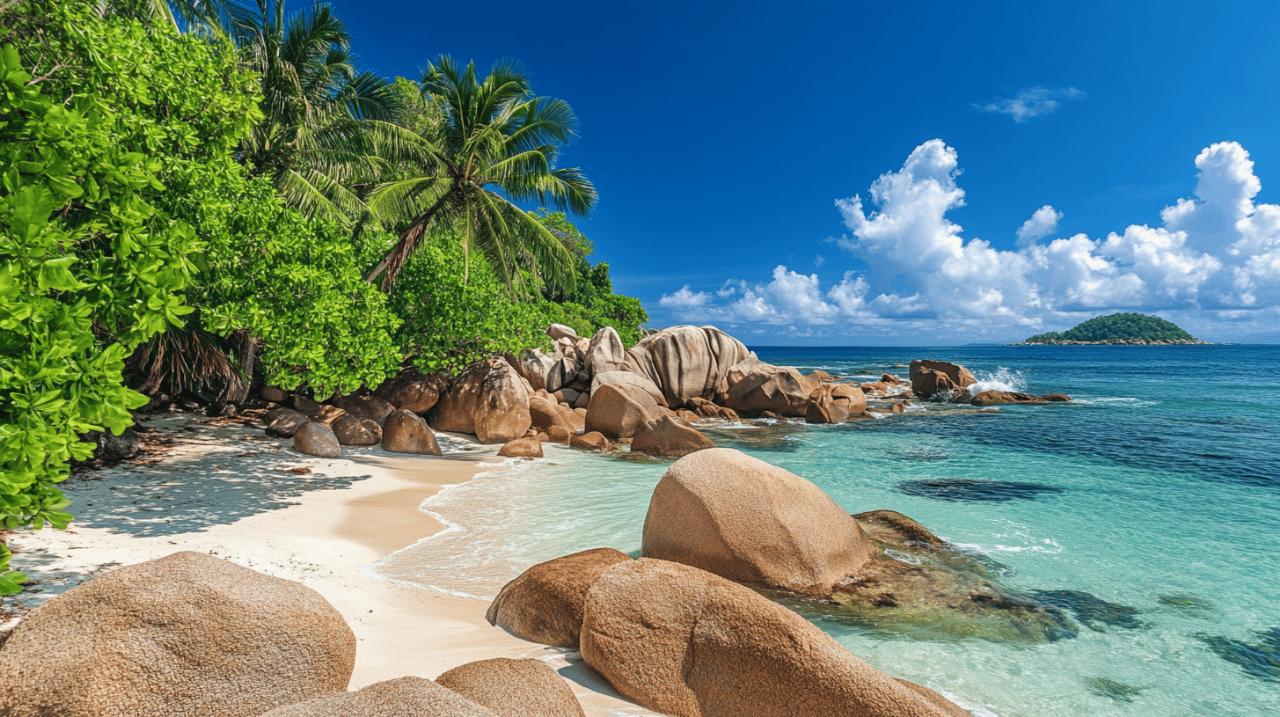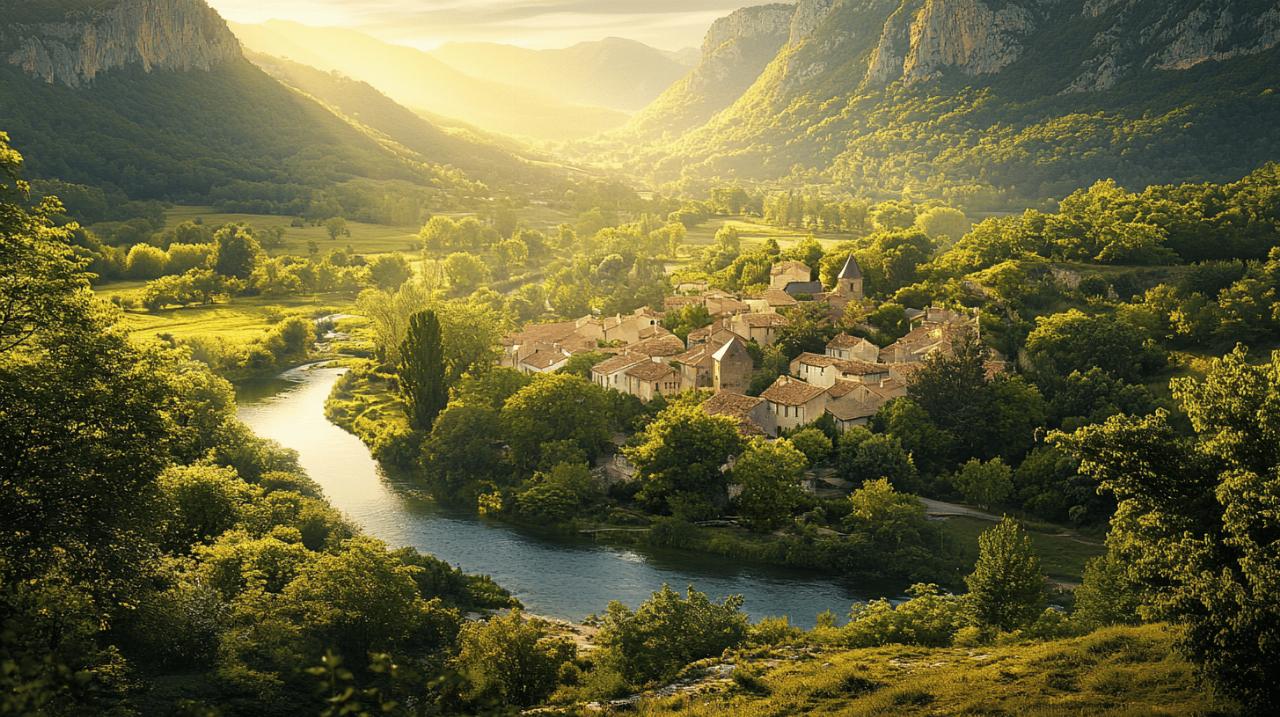When one thinks of a French holiday, the mind often wanders to the bustling streets of Paris or the sun-drenched beaches of the Riviera. Yet, nestled in the northern reaches of this diverse country lies Normandy, a region brimming with undiscovered treasures that offer an authentic glimpse into the heart of France. Away from the tourist hordes and Instagram hotspots, Normandy presents a tapestry of experiences for those willing to venture beyond the obvious.
Undiscovered villages of normandy
The true essence of Normandy reveals itself in its picturesque villages, where time seems to move at a gentler pace and traditions remain gloriously intact. These hamlets offer a stark contrast to the more frequented destinations, providing a genuine connection with the local culture that many travellers now crave.
Medieval Charm of Barfleur and Veules-les-Roses
Barfleur, once one of the most important ports in medieval Normandy, now stands as a tranquil fishing village with grey stone houses clustered around a modest harbour. The village exudes a quiet dignity, its granite buildings weathered by centuries of coastal elements. As you wander the narrow streets, the maritime heritage is palpable, from the fishermen mending their nets to the daily catch being unloaded at the quayside.
Veules-les-Roses presents a different sort of charm altogether. This village claims to have the shortest river in France, the Veules, which meanders just over a kilometre from source to sea. Along this brief journey, the river powered numerous watermills in bygone days, several of which have been lovingly restored. The village itself is a delightful composition of thatched cottages, rose gardens, and centuries-old churches that have inspired artists and poets for generations.
Local Life in Beuvron-en-Auge and Le Bec-Hellouin
Beuvron-en-Auge represents the quintessential Norman village, with its half-timbered houses and central market square that transports visitors to an earlier era. This commune is situated along the Route du Cidre, making it an ideal stop for those keen to sample the local apple-based libations. The village market showcases regional specialities, from pungent cheeses to freshly pressed ciders, all produced within a few miles of where they're sold.
Le Bec-Hellouin offers a spiritual counterpoint, built around its magnificent Benedictine abbey founded in 1034. Beyond the religious significance, the village itself is a testament to traditional Norman architecture, with flower-bedecked cottages lining the main street. Local artisans continue to practise time-honoured crafts, from pottery to woodworking, often using techniques passed down through countless generations.
Coastal treasures beyond the crowds
While Normandy's D-Day beaches rightfully attract history enthusiasts, the region's coastline offers much more than memorials and museums. The dramatic Norman shore presents landscapes of breathtaking beauty, often accessible only to those willing to step away from the usual tourist trails.
Dramatic Cliffs and Hidden Beaches of Étretat
Étretat itself isn't exactly a secret, with its iconic chalk cliffs and natural arches immortalised by Impressionist painters. However, most visitors congregate at the main beach and the obvious viewpoints. The discerning traveller might instead follow the coastal paths less travelled, discovering secluded viewpoints that frame these natural sculptures from unexpected angles.
Beyond the famous Aiguille (needle) rock formation, there are lesser-known caves and coves accessible only at low tide. These transient spaces offer a sense of discovery and solitude that the main beach cannot match. The changing light throughout the day transforms the white cliffs, creating an ever-shifting panorama that rewards those who linger longer than the typical day-tripper.
Secluded Coves Along the Côte d'Albâtre
The Alabaster Coast stretches beyond Étretat, offering numerous hidden inlets and beaches that remain refreshingly uncrowded even during peak season. The pebble beach at Valleuse de Bruneval combines natural beauty with poignant history, being the site of an important Allied raid during World War II. Now peaceful and often deserted, it provides a contemplative space with magnificent cliff views.
Further along the coast, Plage des Petites Dalles nestles between towering white cliffs, accessible via a single road that winds down to the shore. This physical separation from the main coastal routes ensures that even in summer, visitors can enjoy relative solitude. The clear waters and dramatic setting offer a restorative experience far removed from the region's more commercial beaches.
Normandy's culinary delights
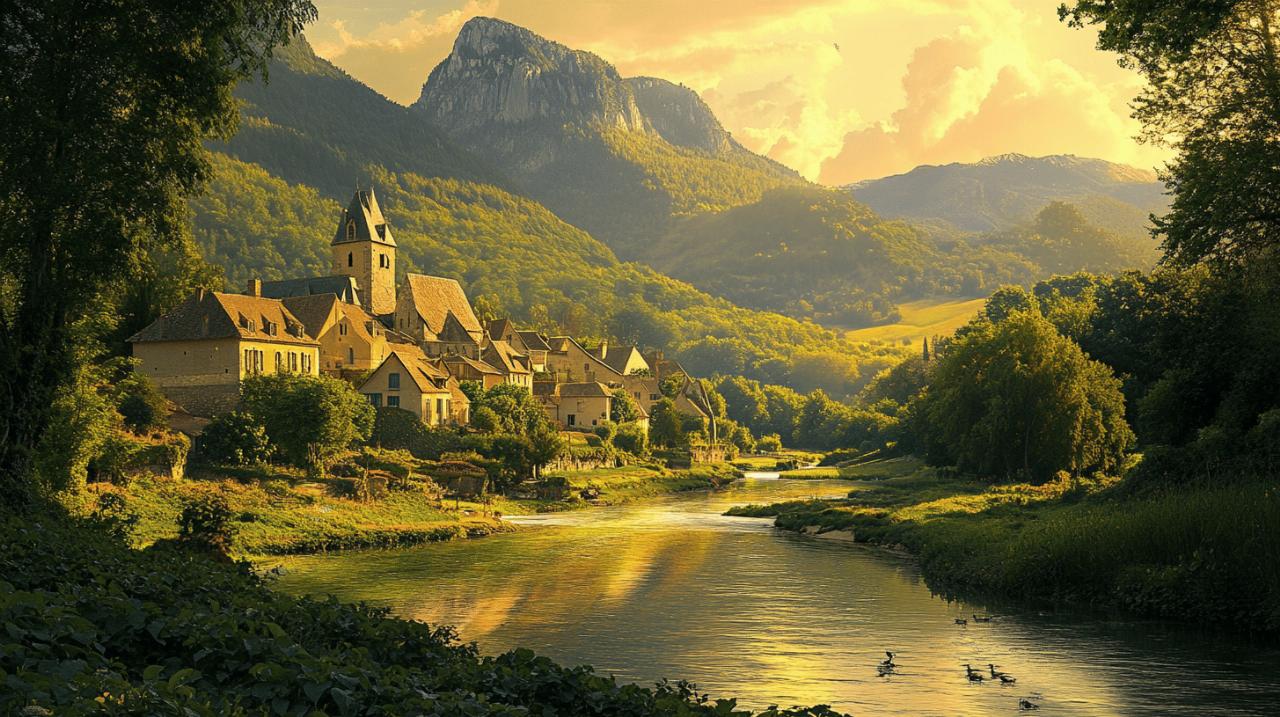 Norman cuisine celebrates the abundance of the land and sea, creating a gastronomic landscape as varied as its physical one. The region's culinary traditions rely on simple, quality ingredients transformed through time-honoured preparation methods.
Norman cuisine celebrates the abundance of the land and sea, creating a gastronomic landscape as varied as its physical one. The region's culinary traditions rely on simple, quality ingredients transformed through time-honoured preparation methods.
Regional specialities: calvados, camembert and crème fraîche
Normandy's apple orchards yield the famous Calvados, an apple brandy that warms the spirit and features prominently in local cooking. A traditional Norman meal might include the 'trou normand', a small glass of Calvados served between courses to refresh the palate and stimulate digestion. This practice speaks to the integral role this spirit plays in the region's culinary identity.
The lush pastures of Normandy support dairy production that rivals any in the world. Camembert, perhaps the most famous Norman cheese, originated in the eponymous village where small producers still craft it using traditional methods. The authentic version, made with raw milk and hand-ladled into moulds, offers a complexity of flavour that industrial variants cannot match. Alongside Camembert, Livarot, Pont-l'Évêque, and Neufchâtel round out Normandy's impressive cheese board.
Authentic farm-to-table dining experiences
Throughout Normandy, farm restaurants or 'fermes-auberges' provide dining experiences of unparalleled authenticity. These establishments serve dishes prepared from ingredients produced on-site or sourced from neighbouring farms. A meal might begin with home-cured meats or freshly harvested seafood, followed by hearty mains featuring local beef or lamb raised in nearby fields.
The concept extends beyond restaurants to farm visits where travellers can participate in food production. From apple pressing during the autumn harvest to cheese-making workshops throughout the year, these hands-on experiences create lasting connections to the region's culinary heritage. The direct relationship between land, producer, and plate exemplifies the sustainable food practices that have characterised Norman farming for centuries.
Natural wonders and countryside escapes
Beyond its cultural and culinary attractions, Normandy offers natural landscapes of remarkable diversity and beauty. These areas provide perfect settings for active exploration or peaceful contemplation, depending on one's inclination.
The verdant landscapes of suisse normande
The somewhat whimsically named 'Norman Switzerland' bears little resemblance to its Alpine namesake, yet possesses a distinctive beauty all its own. This area of southern Normandy features rolling hills, dramatic river gorges, and rocky outcrops that create a landscape quite unlike the pastoral flatlands often associated with the region.
The Orne River carves through this terrain, offering opportunities for kayaking and canoeing through surprisingly dramatic gorges. Hiking trails wind through forests and meadows, occasionally emerging at panoramic viewpoints that reveal the patchwork countryside below. The village of Clécy serves as an ideal base for exploring this area, with its position beside the river and range of outdoor activities.
Tranquil Retreats in the Normandy Bocage
The bocage landscape, characterised by small fields enclosed by ancient hedgerows and woodland, represents a traditional agricultural system that has shaped Normandy for centuries. This intimate countryside creates natural corridors for wildlife and provides a sense of seclusion even when farmhouses and villages lie just beyond the next hedgerow.
Walking through this landscape offers a meditative experience, with narrow lanes tunnelling through overhanging trees and opening suddenly onto verdant meadows. The bocage suffered significant damage during the Battle of Normandy, making its surviving sections all the more precious. Today, conservation efforts seek to preserve this distinctive landscape that supports biodiversity while maintaining its historical character.
Normandy's hidden treasures await those willing to venture beyond the obvious attractions. From medieval villages frozen in time to dramatic coastlines shaped by the elements, from culinary traditions rooted in the land to landscapes of surprising diversity, this northern French region rewards the curious traveller with authentic experiences that linger in the memory long after returning home.

